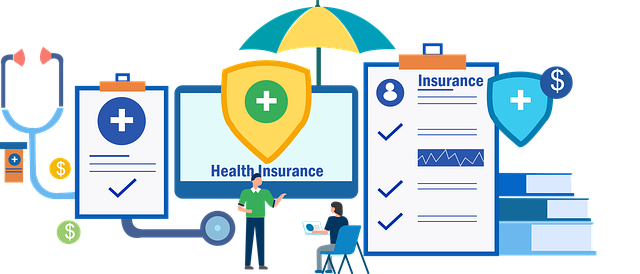To lower your auto insurance premium, understand and adjust coverage deductibles based on financial stability and risk tolerance. Research and compare quotes from multiple insurers, considering factors like coverage limits and company reputation. Upgrade your vehicle's safety features to enhance its profile with insurers. Build and maintain a strong credit score for better deals. Leverage discounts offered by insurance companies for bundling policies or safe driving habits. Bundle auto insurance with home or life insurance for significant savings. Efficiently manage claims to keep your driving record clean and reduce future premiums. Annually review and adjust your policy to avoid overpayments and maximize savings.
Looking to slash your auto insurance premium? This guide is your full-service navigation system. We’ll help you understand essential aspects of auto insurance, from deciphering coverage and deductibles to leveraging safety features, credit scores, and discounts. Learn the dos and don’ts of shopping around, explore bundling options, and grasp how claim management impacts future costs. By regularly reviewing and adjusting your policy, you can drive off into the sunset with significant savings.
Understanding Your Auto Insurance Coverage and Deductibles

Understanding your auto insurance coverage and deductibles is a crucial step in learning how to lower your auto insurance premium. Your policy should clearly outline what’s covered, including liability, collision, comprehensive, and any specific add-ons. By grasping these components, you can make informed decisions about necessary coverage adjustments.
When it comes to deductibles, remember that a higher deductible often leads to lower monthly premiums. Consider increasing your deductible if you have a solid financial cushion. Conversely, a lower deductible means higher premiums but provides peace of mind with smaller out-of-pocket costs in case of an accident. Evaluate your budget and risk tolerance to decide what’s best for you when it comes to deductibles.
Shopping Around for the Best Rates: The Do's and Don'ts

When shopping around for auto insurance, do your research and compare quotes from multiple insurers. Consider factors like coverage limits, deductibles, and the reputation of the company. Keep in mind that a lower premium doesn’t always mean better coverage; ensure you’re getting adequate protection for your needs. Avoid rushing into a decision based solely on cost.
Don’t settle for the first offer or stick with your current provider without shopping around. Insurance rates can vary significantly, and switching providers could save you a substantial amount on your auto insurance premium. Regularly reviewing and updating your policy is a smart way to keep your costs low and make sure you have the right coverage as your needs change over time.
Enhancing Safety Features to Reduce Premium Costs

Upgrading your vehicle’s safety features can be a smart way to lower your auto insurance premium. Modern cars come equipped with advanced safety systems like anti-lock brakes (ABS), electronic stability control (ESC), and airbags, which insurers consider when calculating premiums. If your current policy doesn’t reflect these features, it’s worth reaching out to your provider to discuss potential savings. Many companies offer discounts for vehicles fitted with the latest safety technology, recognizing that such features contribute to reduced risk on the road.
Consider investing in additional safety gear like a rearview camera, lane departure warning, or adaptive cruise control. These advanced driver-assistance systems (ADAS) can further enhance your vehicle’s safety profile and potentially lower your insurance costs significantly. By demonstrating a commitment to safe driving practices, you can enjoy not only peace of mind but also reduced monthly payments on your auto insurance policy.
Building a Solid Credit Score for Better Insurance Deals

Building a strong credit score is an often-overlooked yet powerful tool in securing better insurance deals, especially for auto insurance. Creditworthiness plays a significant role in determining your insurance premium, as companies use it to assess risk. A higher credit score indicates responsible financial behavior, which can lead to more affordable coverage.
To lower your auto insurance premium, focus on improving your credit score. Regularly pay bills on time, keep debt levels low, and maintain a long credit history. These practices demonstrate reliability to insurers, potentially saving you money in the long run. Additionally, monitoring your credit report for errors can help ensure accuracy, further enhancing your financial standing.
Utilizing Discounts Offered by Insurance Companies

Insurance companies often offer a variety of discounts to attract and retain customers, which can significantly lower your auto insurance premium. One of the most common ways to save is by bundling multiple policies with the same company. If you already have home or life insurance, combining these with your auto policy could result in substantial savings. Many insurers also provide discounts for safe driving habits, such as completing a defensive driving course or maintaining a clean record without claims.
Additionally, certain lifestyle choices and personal attributes can make you eligible for reduced rates. For example, insuring multiple vehicles or paying your premium annually instead of monthly might offer cost savings. Students, seniors, military personnel, and members of specific professional organizations may also be eligible for exclusive discounts. Always review the policy terms and conditions to understand what discounts apply to you, as these can change from provider to provider and state to state.
Bundling Policies for Potential Savings on Auto Insurance

Bundling your auto insurance with other policies can be a great way to lower your overall costs, especially if you’re already paying for home or life insurance. Many insurance companies offer significant discounts when you package multiple policies together. This is because they view you as a more reliable customer—someone who is committed to staying with them long-term. So, instead of having separate auto, home, and life insurance policies from different providers, consider shopping around for bundled options.
By combining your auto and other relevant policies, you can potentially save big on your monthly or annual premium payments. Plus, it streamlines the billing process, making it easier to manage your finances. Just be sure to compare quotes from various companies offering bundles to ensure you’re getting the best rate for your specific needs.
Claim Management: How It Impacts Your Future Premiums

Effective claim management is a powerful tool in navigating your auto insurance costs and future premiums. When you file an insurance claim, whether for a collision or minor accident, the process involves adjusting, repairing, or replacing damaged vehicles. Insurers assess the validity and extent of your claim, which can significantly impact your future policy rates. A well-managed claim ensures that repairs are cost-effective and done efficiently, potentially preventing inflated charges.
By keeping claims in check, you maintain a clean driving record, which is crucial for lowering your auto insurance premium. Insurance companies often consider the number of previous claims when calculating rates. Minimizing claims demonstrates responsible driving behavior and can lead to substantial savings on your policy over time. Thus, proper claim management not only facilitates faster resolution but also plays a direct role in managing your long-term insurance expenses.
Regularly Review and Adjust Your Policy to Save Money

Regularly reviewing and adjusting your insurance policy can significantly impact your bottom line, especially when it comes to auto insurance. Many people make the mistake of keeping the same coverage year after year without reassessing their needs. Over time, changes in your life—like a new vehicle, a different driving record, or even moving to a safer neighborhood—can mean you’re paying more than necessary for your auto insurance premium. By reviewing your policy at least once a year, you can identify areas where you might be overpaying and make adjustments to lower your costs.
Consider comparing quotes from different insurers to see if you could get better coverage for a lower price. Additionally, look into discounts that may be available to you; many companies offer reductions for safe driving, good students, or membership in certain organizations. Small tweaks can lead to substantial savings on your auto insurance premium over the course of a year.
